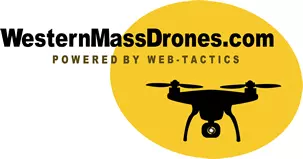Key Differences Between Drone Photography and Videography
With the ability to photograph and film unique perspectives, drone operators can create stunning visuals that would be impossible from the ground. However, there's a marked difference between drone photography and drone videography, even though they rely on the same flying technology. In this blog, we'll dive into the key distinctions between these two forms of aerial capture, focusing on the nuances of framing, lighting, and timing.
The Unique Challenges of Capturing Aerial Imagery
Operating a drone to capture imagery requires more than just technical know-how; it's about understanding how to translate the 3D world into visually compelling shots. While drone photography and videography share some foundational principles, the differences in execution can be significant.
The most immediate challenge of aerial imagery is perspective. Drones allow access to new vantage points, but this also means working with constantly changing environmental conditions like wind, lighting, and weather. For photography, you're often aiming for a single, perfect frame. In videography, your focus shifts to capturing fluid motion. Each comes with its own challenges that need to be addressed while the drone is in motion.
Drone Photography: Capturing a Single, Stunning Moment
Framing the Perfect Shot
Drone photography requires careful attention to framing because you're to capture one specific moment in time. The composition must be intentional, with every element in the frame contributing to the final image. A well-composed shot often follows established photography rules like the rule of thirds or leading lines, which guide the viewer through the photo.
When shooting from high altitudes, these rules become even more crucial. The drone's height and angle affect how the landscape looks, and subtle changes in position can dramatically alter the composition. In aerial photography, there's limited room for error because you may not have the luxury of returning to the same vantage point once the drone is in motion.
Lighting for Photography
Lighting is critical in drone photography, often dictating when you can shoot. Natural light is typically the best source for capturing crisp, vivid images. Early morning or late afternoon light, commonly referred to as the "golden hour," provides soft, diffused lighting that brings out the landscape's textures and colors.
Since drone photographers can't always control the environment, they must plan ahead, considering how the light will interact with the subject. Shadows, contrast, and the overall mood of the image are all affected by natural lighting. Missing this window could result in a flat or overly harsh image that doesn't showcase the scene's full potential.
Timing the Perfect Moment
Timing in drone photography is all about preparation. You need to be ready for the right moment because once the drone is in position, the opportunity to capture the ideal shot might last only seconds. Whether photographing a natural landscape or a dynamic event, timing is essential, as is planning - studying the landscape beforehand, calculating the best time of day, and so on. Prep ensures that when the moment arrives, you're prepared to capture it perfectly.
Drone Videography: Crafting a Dynamic Narrative
Framing for Movement
Drone videography brings motion into the equation, shifting the approach to framing. In a video, the elements within the frame will move and evolve, which means your focus isn't just on capturing a single image but on creating a sequence of frames that flow together. The framing needs to accommodate this motion, naturally guiding the viewer's eye through the scene.
The drone's movement also impacts framing. Tracking shots, flyovers, and pans introduce motion that can either enhance or detract from your story. Unlike still photography, where the focus is locked onto one composition, videography allows for exploring different perspectives throughout the shot.
Lighting in Videography
Lighting for drone videography is more fluid than photography because the scene constantly changes as the drone moves. While golden hour lighting is still desirable, the constant motion allows videographers to capture a broader range of lighting conditions in a single shot.
Shifting from a brightly lit area to one in shadow can add depth to the video, making it feel dynamic and immersive. By carefully timing these transitions, you can highlight different features of the landscape, creating a more engaging visual experience.
Timing the Shot in Video
Timing in videography is about more than just capturing a single moment— it's about coordinating multiple elements simultaneously. You need to sync the drone's movements with the action below, whether that's an event, a landscape, or a subject in motion.
Establishing shots, close-ups, and transitions must all be timed correctly to tell a cohesive story. For instance, capturing an expansive landscape may require a slow, sweeping movement, while focusing on a particular detail might call for a quick zoom or pan. Timing is crucial in creating a video that feels smooth and intentional.
What are the Key Differences Between Drone Photography and Videography?
Focus on Framing:
Photography is about capturing one moment, while videography requires anticipating movement and transitions. Each approach has its framing considerations, with photography focusing on static composition and videography on dynamic scenes.
Lighting Considerations:
While both mediums rely on natural light, drone photography focuses on capturing the perfect lighting at a specific time of day, whereas videography can explore varying lighting conditions throughout the shot.
Timing and Execution:
Photography often demands preparation and timing for a single shot, while videography involves continuous timing and synchronization of movement to ensure smooth, engaging footage.
Conclusion
By understanding these differences, drone operators can better prepare for the type of imagery they want to capture, whether taking a photograph or an immersive video. Both disciplines offer unique opportunities to explore the sky and create impactful visuals, but the approaches to framing, lighting, and timing vary significantly. Understanding how to adapt these techniques will help you elevate your drone work, regardless of your chosen medium.

